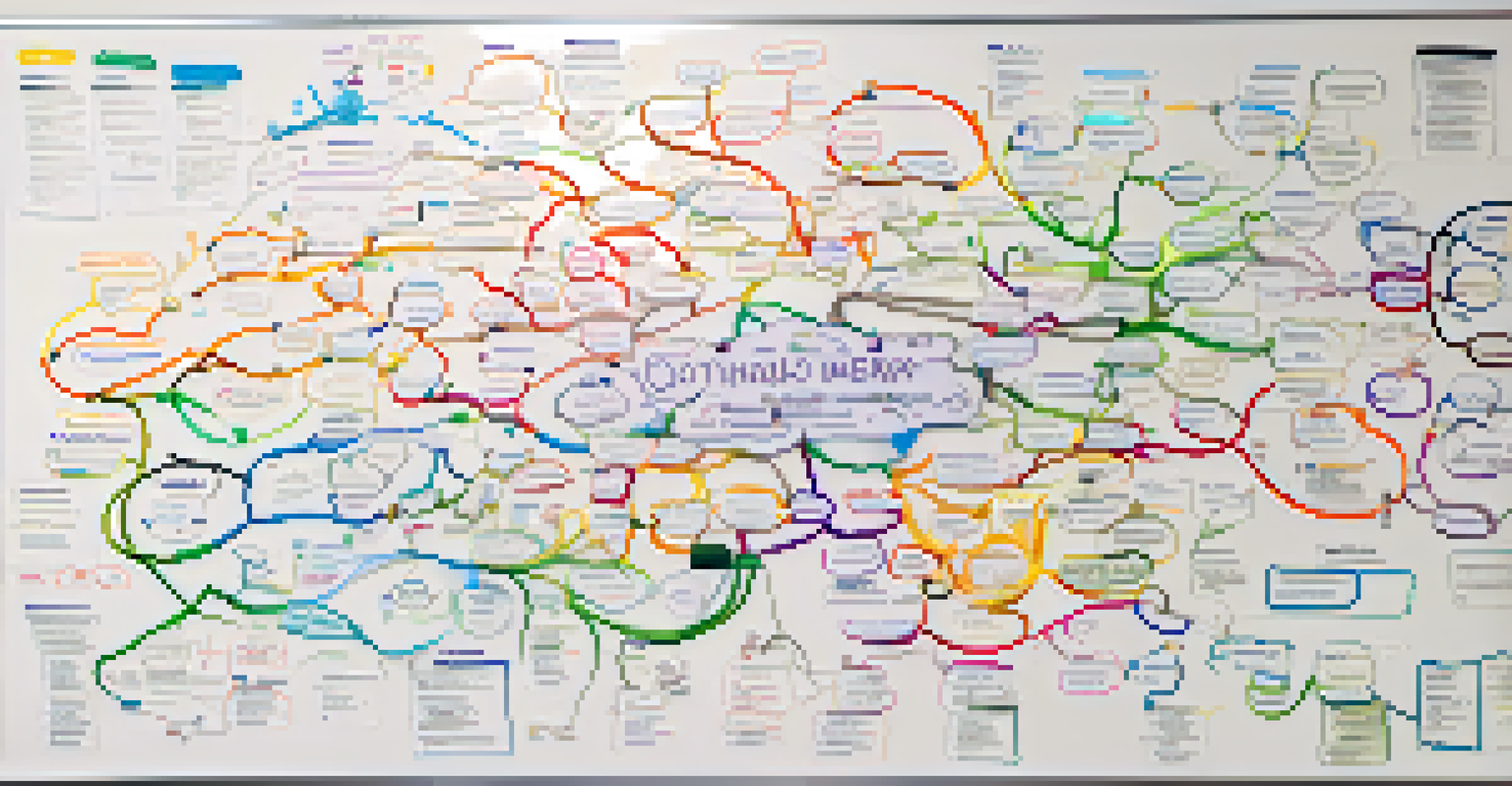Collaborative Brainstorming: Techniques for Creative Teams

Understanding Collaborative Brainstorming
Collaborative brainstorming is a creative technique that brings team members together to generate ideas and solve problems. It emphasizes the importance of diverse perspectives, allowing individuals to build on each other's thoughts. This synergy can lead to innovative solutions that might not emerge in isolation.
Alone we can do so little; together we can do so much.
Unlike traditional brainstorming, where one person often leads the discussion, collaborative brainstorming encourages equal participation. Everyone's input is valued, creating a safe space for sharing ideas without criticism. This approach not only enhances creativity but also strengthens team dynamics.
Ultimately, the goal is to harness the collective intelligence of the group. When team members collaborate effectively, they can explore a wider range of possibilities and develop more comprehensive solutions to challenges.
Setting the Stage for Effective Brainstorming
Creating the right environment is crucial for successful collaborative brainstorming. A comfortable space, free from distractions, allows participants to focus and engage fully. Consider using tools like whiteboards or sticky notes to encourage visual thinking and idea mapping.

It's also essential to establish clear objectives before diving into brainstorming sessions. Knowing what you're trying to achieve helps keep the discussion on track and ensures everyone is aligned. This clarity can foster a more productive atmosphere.
Fostering Diverse Ideas
Collaborative brainstorming leverages diverse perspectives to generate innovative solutions through equal participation.
Lastly, consider the timing of your brainstorming session. Scheduling it at a time when team members are likely to be energized and focused can significantly impact the quality of ideas generated. A well-timed session can lead to breakthrough thinking.
Techniques to Spark Creativity
There are several techniques you can use to kickstart creativity during brainstorming sessions. One popular method is mind mapping, which visually organizes information and ideas. This technique encourages participants to explore connections and relationships between concepts, leading to more innovative thinking.
Creativity is thinking up new things. Innovation is doing new things.
Another effective approach is the 'Crazy 8s' technique, where participants sketch eight ideas in eight minutes. This fast-paced exercise pushes individuals to think outside the box and fosters a sense of urgency, often resulting in surprising ideas that wouldn't surface in a more relaxed setting.
Finally, consider using role-playing to stimulate creative thinking. By stepping into different perspectives, team members can explore ideas more deeply and challenge their assumptions. This technique not only enhances creativity but also promotes empathy within the team.
Encouraging Open Communication
Open communication is a cornerstone of successful collaborative brainstorming. Encouraging team members to share their thoughts freely can lead to unexpected insights and ideas. Creating a culture where all voices are heard fosters trust and collaboration.
Active listening plays a vital role here. When participants feel that their contributions are valued, they are more likely to engage and share their ideas. Practicing active listening can involve summarizing what others have said or asking clarifying questions to deepen understanding.
Creating a Supportive Environment
A comfortable and distraction-free space, along with clear objectives, is essential for effective brainstorming sessions.
Additionally, incorporating feedback loops during brainstorming sessions can enhance communication. Allowing time for participants to reflect on and respond to ideas can lead to richer discussions and stronger outcomes.
Leveraging Technology for Collaboration
In today's digital age, technology can significantly enhance collaborative brainstorming efforts. Tools like virtual whiteboards and collaborative document editors allow teams to brainstorm in real-time, regardless of their physical location. This flexibility can lead to a more diverse range of ideas.
Project management and brainstorming apps also facilitate idea organization and follow-ups. Using these tools, teams can capture ideas as they emerge, ensuring no valuable input is lost in the shuffle. This organized approach helps maintain focus and clarity throughout the brainstorming process.
Moreover, video conferencing platforms enable face-to-face interactions, which can strengthen team bonds and improve communication. Visual cues and body language play an important role in effective collaboration, and technology can help bridge gaps when teams are working remotely.
Building on Ideas through Collaboration
One of the most powerful aspects of collaborative brainstorming is the ability to build on each other's ideas. This practice, often referred to as 'yes, and...' encourages participants to accept and expand upon suggestions rather than dismissing them. It fosters a positive atmosphere where creativity can flourish.
This technique also helps teams avoid the pitfalls of groupthink, where individuals may hold back their true thoughts to conform to the group's opinions. By promoting an environment where all ideas are seen as valuable, teams can explore a wider array of possibilities and refine their concepts.
Using Technology for Collaboration
Technology enhances collaborative brainstorming by enabling real-time idea sharing and organizing contributions efficiently.
Encouraging team members to ask questions and challenge assumptions can further enhance this collaborative spirit. When individuals feel empowered to delve deeper into ideas, they contribute to a more thorough exploration of potential solutions.
Evaluating and Prioritizing Ideas
Once a brainstorming session wraps up, it's crucial to evaluate and prioritize the ideas generated. This process helps the team focus on the most promising concepts and determine the next steps. Creating criteria for evaluation, such as feasibility, impact, and alignment with goals, can streamline this process.
Encouraging team members to vote on their favorite ideas can also help in prioritization. This democratic approach ensures that everyone's voice is heard and can lead to a consensus on which ideas to pursue further. It also fosters a sense of ownership and investment in the project's direction.

Finally, documenting the outcomes of the brainstorming session is vital. Keeping a record of generated ideas and decisions made will provide a valuable reference for future projects and help track progress as the team moves forward.